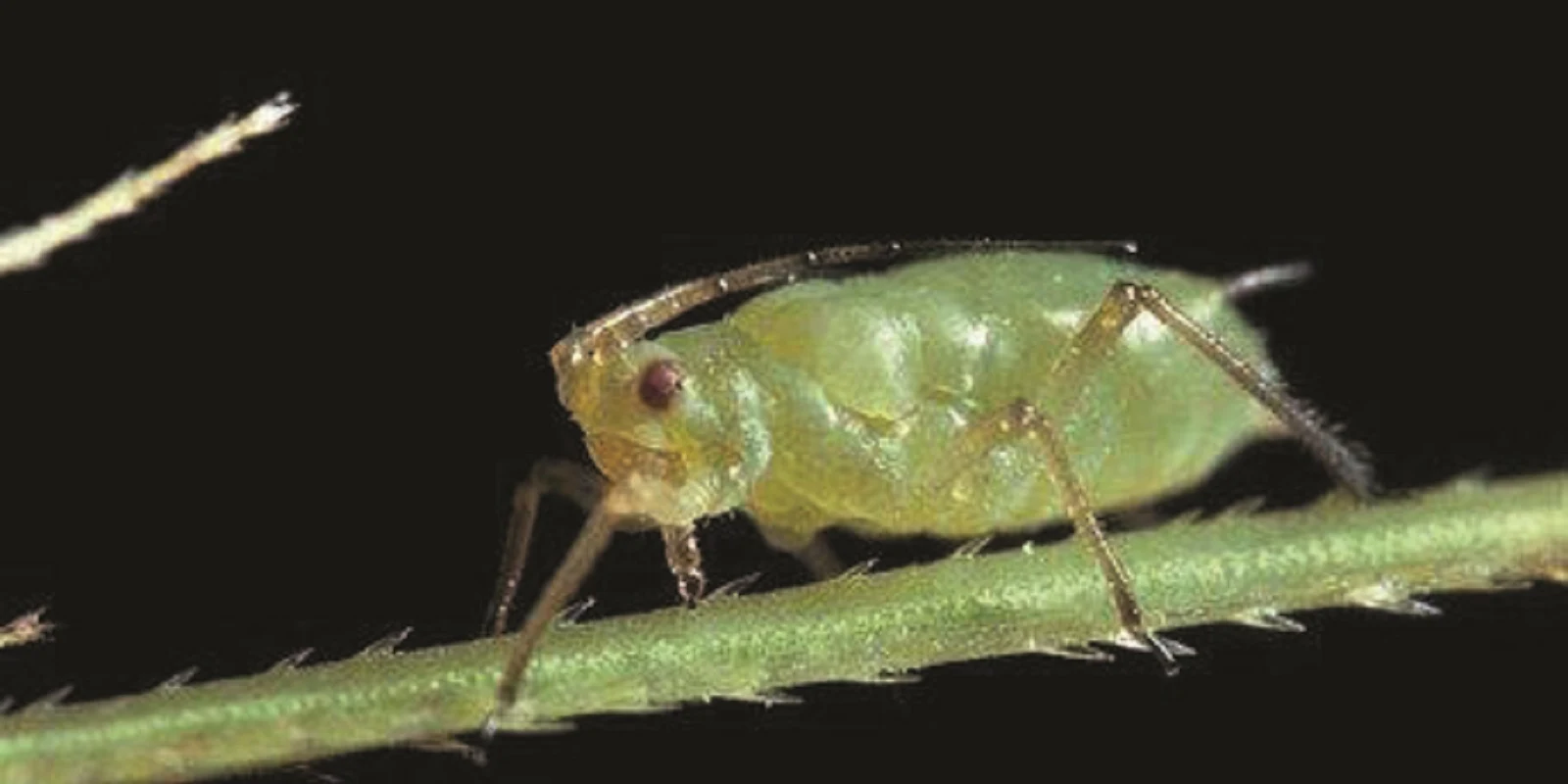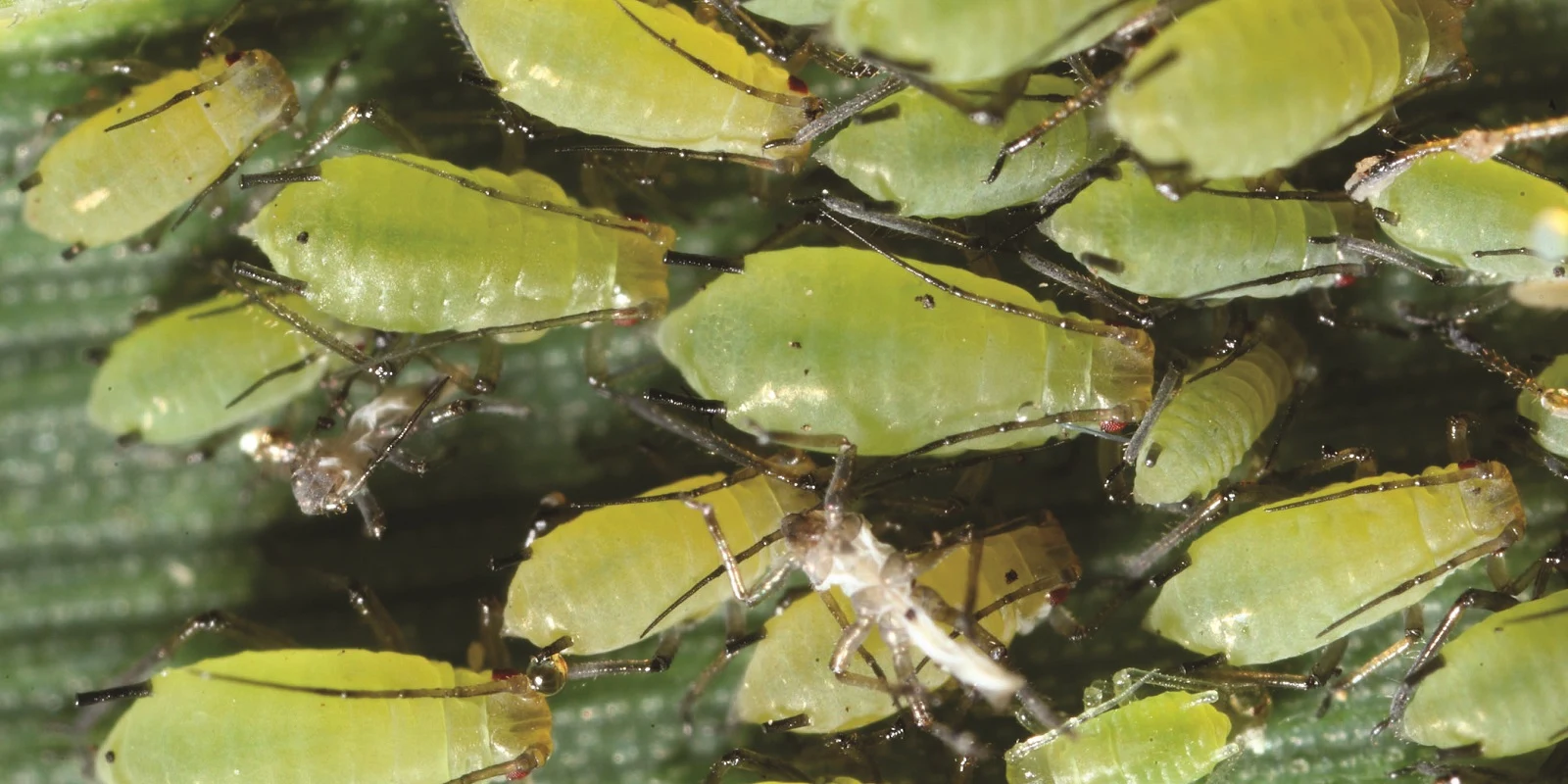
Grain Aphid
Sitobion avenae

Sitobion avenae
Identification
The grain aphid varies from yellowish green to dark brown in colour.
Symptoms
The grain aphid predominantly feeds on the ears whereas the rose-grain aphid (Metopolophium dirhodum) prefers the leaves. The resultant exudation of honeydew can lead to the build-up of secondary damage from fungal colonisation (sooty moulds) giving the ears a darkened appearance and where pest pressure is high the crop can suffer both yield and quality penalties. The grain aphid can also transmit the virulent stain of BYDV and is an important vector of this virus particularly in the north of England.
Life-cycle
The grain aphid lives on grass and cereals throughout its life-cycle and the winged forms move into crops in mid-summ
er where it can be readily seen on leaves and ears.
Importance
Ear infections can be very damaging as a result of the honeydew exudate on which sooty mould fungi thrive to give the ear a ‘blackened’ appearance. Yield losses of up to 11 % have been recorded and quality can also be adversely affected as a result of damaged shrivelled grain.
Threshold
Ear sprays ADAS thresholds are 50 % tillers infested before GS 61 and 66 % tillers infested from GS 61 to two weeks before end of grain filling. The critical time for sustaining loss for cereals is between the start of flowering (GS 60) until the milky ripe stage (GS 73). Traditionally it was recommended that crops should be sprayed if aphid numbers average 5 or more per ear at the flowering stage. An alternative threshold would be more than 50 % of tillers or stems with aphids present or more than 66 % of ears and stems with aphids present at the flowering stage and numbers increasing. If the timing for orange wheat blossom midge coincides, Biscaya will control aphids present in the ear at spraying.

Grain aphid

Grain aphid colony on a wheat leaf


